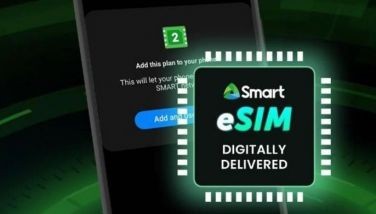LBS resurrected
June 18, 2004 | 12:00am
After the turn of century, it was even more apparent that the mobile phone was going to be the default appliance of choice for personal communications. Today’s subscriber would accidentally leave his wallet home and still manage to survive the day with sanity intact while the absence of his mobile phone from arms’ length for mere minutes could leave him suffering from an anxiety attack. A lot of killer app pronouncements were made during the height of the tech bubble, and one of them spoke about the ability to use a mobile phone to pinpoint a caller’s precise location. This concept instilled some fear of big brother in most of us regular folk. For the sociable married man though I believe the fear was much bigger, the fear of the wife knowing his every location anytime of the day. Fortunately for these husbands, this technology failed to deliver asillegible maps on mobile phones’ black-and-white screens failed to make any sense and triangulation coordinates delivered inaccurate locations as far off as kilometers away, leaving users frustrated.
I’ve noticed lately though that telecom companies are now selling much-improved services that help users locate children or cars or track packages, but they still have that daunting task of hurdling consumers’ bad memories from 2001. Advances in technology though have given carriers that renewed confidence to once again push location-based services (LBS).
To start off, maps or directions are now tailored to a handset’s small screen, which is now in color. These maps are designed to meet specific demands, such as to help pedestrians who need landmarks to simplify their orientation when they come out of a building. On the network side, some of the new technologies I have heard of range from GPS-assisted chips, which communicate with satellites, to U-TDOA software, which measures the distance of a phone to three radio base stations. These have emerged to further refine the location of phones.
In the United States, for instance, telecom operators were given by the government till the end of 2005 to enable all mobile phones to be pinpointed within a specific tiny radius, thus further boosting support for LBS. I read too that CDMA phones will mostly be fitted with A-GPS chips, while GSM networks will be upgraded with U-TDOA. This new requirement will definitely cost operators millions of dollars to execute but whether this undertaking will succeed in paving the way for new commercial LBS activities remains to be seen. The European Union and Asian governments no doubt will surely keep their eyes on possibly learning from this exercise as possible applications of such accuracy will provide taxpayers more reliable emergency location services on their phones.
In the Philippines, I commend our telecom operators for endeavoring to leverage more current LBS technologies around communities and practical needs such as Smart’s Kid & Parent Finder Service, Vehicle Locator and Safe Taxi Service. Another interesting story, a murder suspect who stole his victim’s Sony T-610 was apprehended last week after our local telecoms company was able to direct authorities to the actual location of the mobile phone. Look like things are looking up for LBS.
Patrick Garcia is the managing director of Bidshot Wireless Services. For comments or suggestions, text your message to 233011 (Globe) or 2430018 (Smart), or e-mail [email protected].
I’ve noticed lately though that telecom companies are now selling much-improved services that help users locate children or cars or track packages, but they still have that daunting task of hurdling consumers’ bad memories from 2001. Advances in technology though have given carriers that renewed confidence to once again push location-based services (LBS).
To start off, maps or directions are now tailored to a handset’s small screen, which is now in color. These maps are designed to meet specific demands, such as to help pedestrians who need landmarks to simplify their orientation when they come out of a building. On the network side, some of the new technologies I have heard of range from GPS-assisted chips, which communicate with satellites, to U-TDOA software, which measures the distance of a phone to three radio base stations. These have emerged to further refine the location of phones.
In the United States, for instance, telecom operators were given by the government till the end of 2005 to enable all mobile phones to be pinpointed within a specific tiny radius, thus further boosting support for LBS. I read too that CDMA phones will mostly be fitted with A-GPS chips, while GSM networks will be upgraded with U-TDOA. This new requirement will definitely cost operators millions of dollars to execute but whether this undertaking will succeed in paving the way for new commercial LBS activities remains to be seen. The European Union and Asian governments no doubt will surely keep their eyes on possibly learning from this exercise as possible applications of such accuracy will provide taxpayers more reliable emergency location services on their phones.
In the Philippines, I commend our telecom operators for endeavoring to leverage more current LBS technologies around communities and practical needs such as Smart’s Kid & Parent Finder Service, Vehicle Locator and Safe Taxi Service. Another interesting story, a murder suspect who stole his victim’s Sony T-610 was apprehended last week after our local telecoms company was able to direct authorities to the actual location of the mobile phone. Look like things are looking up for LBS.
BrandSpace Articles
<
>
- Latest
Latest
Latest
February 22, 2024 - 3:17pm
February 22, 2024 - 3:17pm
December 28, 2023 - 12:00am
December 28, 2023 - 12:00am
December 11, 2023 - 11:00am
December 11, 2023 - 11:00am
November 23, 2023 - 4:35pm
November 23, 2023 - 4:35pm
Recommended





























